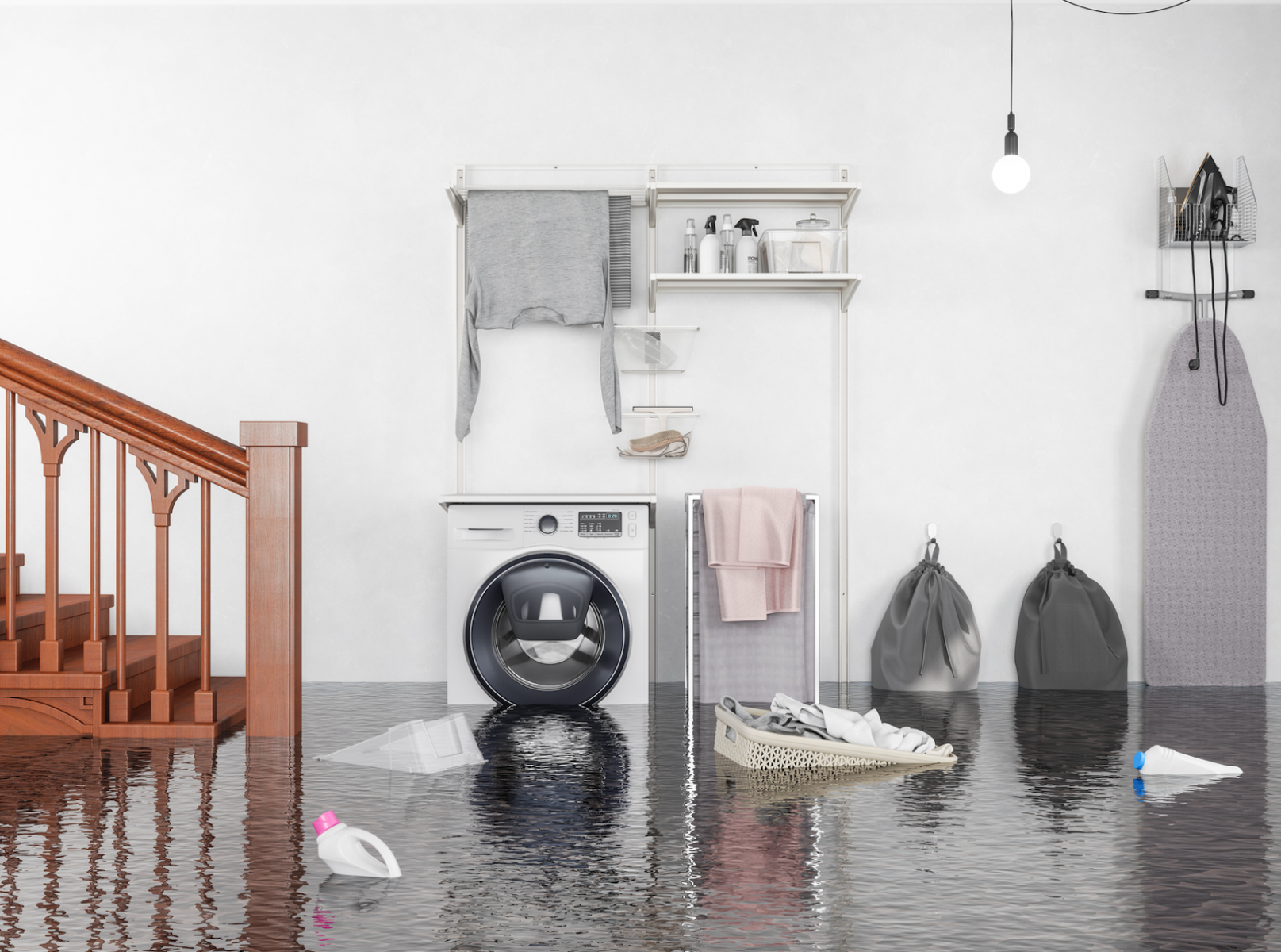
Backflow protection: preventing flooded basements
When the sewer system is overloaded: What is backflow?
Below the flood level it can be dangerous
If no backflow protection is installed, the water does not drain away quickly enough and pushes back into the building, where it can flow from drains, sinks or toilets.
What can backflow protection look like - both active and passive?
- Passive backflow protection with the aid of anti-flooding devices
- Active backflow protection with the aid of lifting units
Passive backflow protection: watertight drain thanks to anti-flooding device
- The discharge points are located above the sewage system, i.e. there is a natural fall down to the sewer
- The rooms are intended for subordinate use only, i.e. no significant damage to health or property can occur in the event of flooding
- The number of users is limited and the users have access to a toilet above the flood level, and
- Use of the affected discharge point is not required in the event of a backflow.
- Be constructed in such a way that they do not experience wear under the influence of domestic waste water
- Close automatically in the event of backflow and ensure unobstructed water drainage after the backflow has ended, and
- Be regularly maintained.
The sink and toilet discharge points are below the flood level and there is a fall to the sewer system. Here, an anti-flooding device protects against flooding when necessary.
Active backflow protection: Only lifting units make things really safe
The discharge points here are below the flood level but still above the sewer: the waste water is lifted through the backflow loop and flows off into the sewer system.
Here the discharge points are even below the level of the sewer system – a lifting unit is mandatory in this case.
What type of lifting unit is needed for what?
- Type 1: Lifting units for waste water containing faeces from flushing lavatories and urinal systems
- Type 2: Lifting units for slightly contaminated waste water or rainwater without faeces
- Type 3: Lifting units for waste water containing faeces and subject to limited use
- Quarterly in commercial buildings
- Half-yearly in multiple dwelling buildings
- Annually in single-family houses
Where do which standards relating to backflow protection apply?
- DIN EN 12056 Gravity drainage systems inside buildings
- DIN EN 752 Drain and sewer systems outside buildings
- DIN 1986-100 Drainage systems for buildings and premises – Part 100: Specifications in relation to DIN EN 752 and DIN EN 12056 (German only)
- DIN EN 12050 Waste water lifting plants for buildings and sites
- Part 1: Lifting plants for wastewater containing faecal matter
- Part 2: Lifting plants for faecal-free wastewater
- Part 3: Lifting plants for limited applications
- Part 4: Non-return valves for faecal-free wastewater and wastewater containing faecal matter
Building, land and public space: the spatial scope of the various standards relating to backflow protection.
Summary
Suitable products
Compacta
Floodable single-pump sewage lifting unit or dual-pump sewage lifting unit for automatic disposal of waste water and faeces in buildings and building sections below the flood level.
MiniCompacta
Floodable single-pump sewage lifting unit or dual-pump sewage lifting unit for automatic disposal of domestic waste water and faeces in building sections below the flood level.
AmaDrainer 4 / 5/AmaDrainer 80 / 100
AmaDrainer 4../5..: Vertical single-stage fully floodable submersible motor pump in close-coupled design, IP68, with or without level control, max. immersion depth: 7 m. AmaDrainer 80/100: Vertical single-stage fully floodable submersible motor pump in close-coupled design, IP68, with or without level control, max. immersion depth: 10 m.